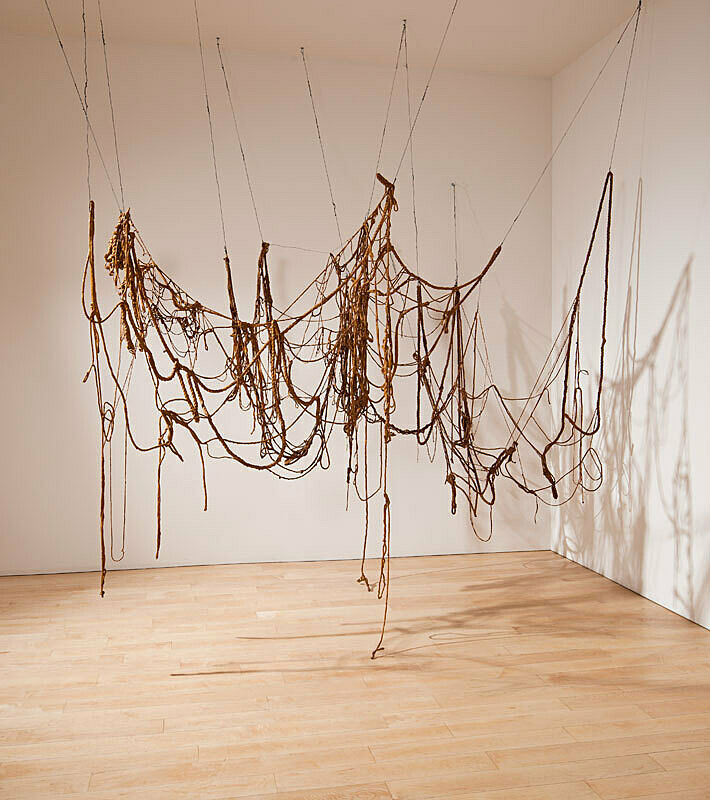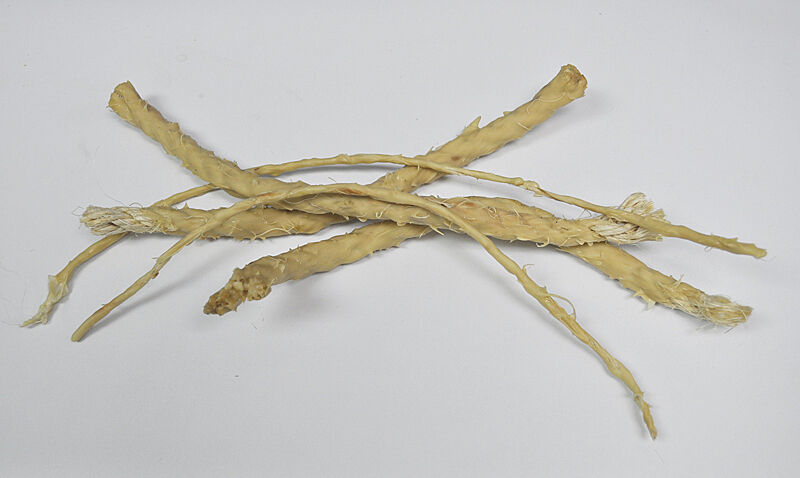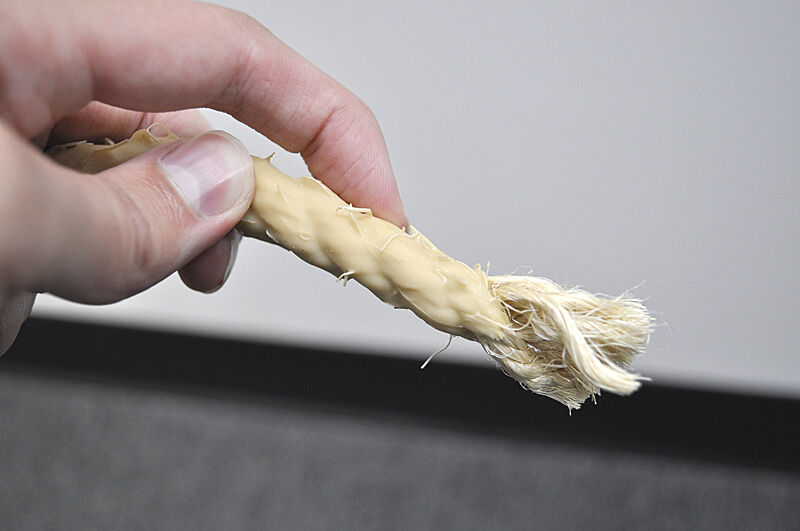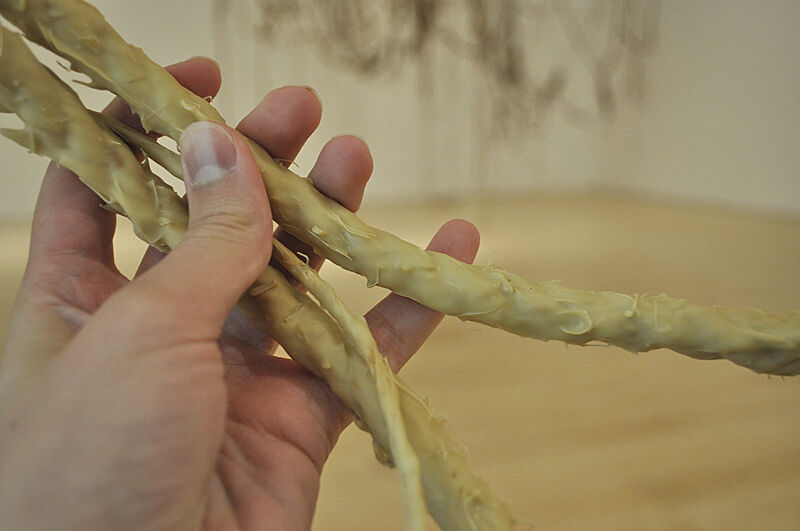Making Art Accessible: Verbal Description and Touch Tours
Sep 13, 2012

Eva Hesse (1936–1970), No title, 1970. Latex, rope, string, and wire, dimensions variable. Whitney Museum of American Art, New York; purchase with funds from Eli and Edythe L. Broad, the Mrs. Percy Uris Purchase Fund, and the Painting and Sculpture Committee 88.17a-b. © The Estate of Eva Hesse. Photograph by Sheldan C. Collins

For each exhibition, Whitney educators think about how to make art accessible for all visitors. The Museum offers Verbal Description and Touch Tours for visitors who are blind or partially-sighted. Educators leading the tours are trained to provide a comprehensive description of all the visual elements of a work of art including size, color, shape, and placement, while also offering relevant contextual information about the artist, artistic style, and time period. Working in tandem with the Whitney’s Conservation Department, Education staff identifies artworks that may be touched gently by visitors wearing gloves, allowing them to get a better sense of the object through tactile exploration. But what happens when a work is deemed too fragile to touch? Whenever possible, the educators provide some kind of hands-on experience that will add to the visitors’ understanding of the work. This was the case for Eva Hesse’s sculpture, No Title (1970), on view in the exhibition Singular Visions through August 5, 2012.
The rope that comprises Hesse’s sculpture at first seemed knotted, or purposely tangled, but closer examination revealed that the rope has been coated in latex and that the sticky nature of the medium has caused the rope to stick together in various spots over time. The latex, however, has hardened and become extremely brittle and delicate over time, therefore it cannot be touched. As the Access and Community Programs summer intern, I learned how to deal with situations like this creatively and effectively. I was given the task of making a reproduction of Hesse’s sculpture that could be easily handled in the gallery. Without knowing it, I would be recreating Hesse’s process on a smaller scale.
I cut up ten, ruler-sized pieces of rope and dipped them into a small bucket of latex I had purchased at the art supply store. The liquid latex was thick, making it difficult to push the rope in. I had to use my glove-covered fingers to completely submerge them. Then, to dry them, I fashioned a makeshift clothesline between two chairs and hung the pieces with binder clips. However, they kept swinging into each other and sticking to each other. I had to pull them apart several times before feeling confident that they would not fuse together overnight. When the pieces were dry, the latex created a smooth layer which took the shape of the rope but also completely covered its rough-hewn, sinewy texture.
On June 28, participants gathered for a tour of Singular Visions. During the tour, part of the educator’s verbal description included a discussion of how Hesse made the original No Title (1970). With the help of assistants, Hesse dipped bunches of rope into a large bucket of latex, then spread them out and hung them to dry. Hesse, unlike me, then let the latex take control, which resulted in all the tangles and fusions in the rope.
During the tour, as the educator described the sculpture and Hesse’s technique, we circulated the latex-dipped ropes for people to feel the sticky, spongy, rubbery quality of the latex and how it covered and altered the rope. I came away from this experience with a better understanding of Hesse’s process, and the realization that in order for visitors who are blind and partially sighted to gain total access to a work, it is imperative to provide information about how a piece looks, what it is made of, what it feels like, and how it was made.
Lizzie Bryson, Access and Community Programs Intern


